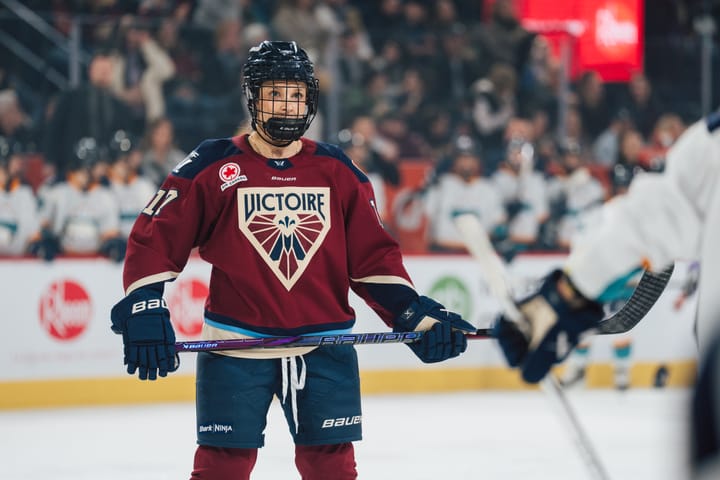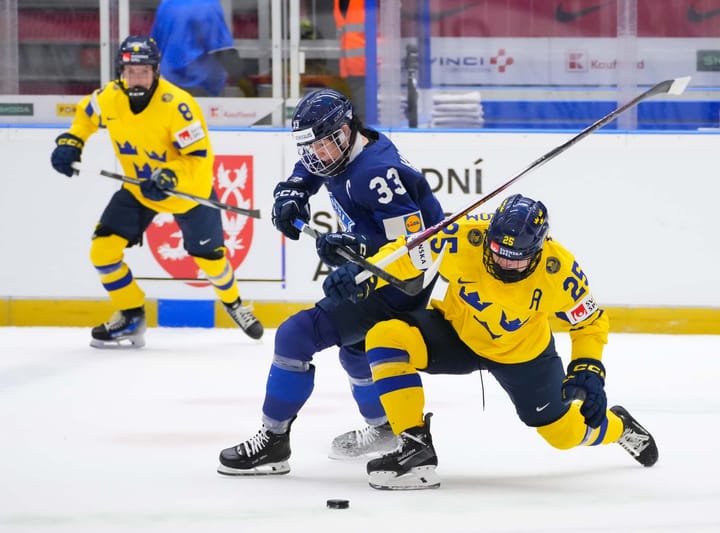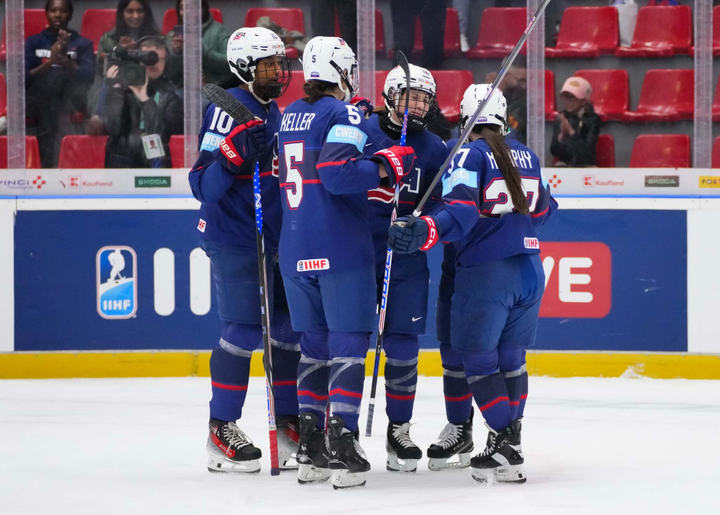North American women’s hockey is no stranger to turbulence
If the past is any indication, the future should be fine.
Did you know that Dani Rylan and Hayley Moore’s NWHL isn’t the first National Women’s Hockey League?
It’s not. A league was founded with the same name in 1999. And that wasn’t the first women’s hockey league in North America either, as the original NWHL succeeded yet another women’s hockey league (the Central Ontario Women’s Hockey League) when it was formed, and was followed up by the CWHL in 2007.
The original NWHL had an Eastern and Western division, and the Western division split off to form the Western Women’s Hockey League (WWHL) in 2004 due to high travel costs. The WWHL existed until 2011, when it was supposed to merge with the CWHL, but the WWHL was never properly folded, so the league limped along without a real structure for years. One of its teams, the Manitoba Maple Leafs, was active until 2014, and the Minnesota Whitecaps continued to play exhibition games until they were added to the new NWHL in 2018. The original NWHL folded in 2007, and many players joined the newly-formed CWHL.
I could go on for hours. The history of women’s hockey in North America is complex and riddled with the kind of sour politics that people have noticed between the CWHL and today’s NWHL. Things have never been easy, and they have certainly never been clear. All this to say that unfortunately, the folding of one league, the forming of another, the expansion and contraction and rapid changes in women’s professional hockey--those aren’t new things, and they’re not specific to today, either. Through it all, women’s professional hockey in North America has found a way to grow, and I’m sure it will continue to do so.
inbox: @HockeyCanada's @TheCWHL players issued a group statement on the #CWHL pic.twitter.com/4b2vbeqnEc
— Michelle Jay (@michelle_jay3) April 2, 2019
There are a lot of mixed feelings on what’s happened over the last couple of days in women’s hockey. The sudden and upsetting folding of the CWHL on Sunday threw everyone into disarray trying to make sense of what happened to cause the league to fail, and where players would play in the fall. As of yesterday, those players have been told they may have the option to continue playing in a professional league in North America this fall, if the NWHL is successful in expanding to Toronto and Montreal. At face value, that sounds like a good thing, full stop--women who had no prospect of continuing their careers this time yesterday now have some hope of doing so--so why is there so much discord?
For starters, there has always been bad blood between the NWHL and the CWHL. The fact that the CWHL has folded doesn’t change the way that former CWHL players feel about the NWHL. It’s become pretty clear that plenty of CWHL players feel as though the NWHL as a league won’t respect their voices or their integrity as individuals. Given the way that the first two years of the NWHL’s existence went, it’s hard to blame them. Between mid-season salary cuts and a near-strike, the NWHL was decried for its lack of transparency and lack of concern for its players safety and agency. For players like Hilary Knight, whose last season in the NWHL was 2016-2017 (the NWHL’s second season), that will be the memory most fresh in their minds.
That being said, it’s not 2017 anymore. It’s 2019, and the NWHL has seen enormous growth since those first two years, in almost every imaginable way. Perhaps the most relevant to players’ concerns is that the NWHL has become more transparent, releasing some information about its investors, average attendances, salary information, and plans for the future. With private ownership working well for the Beauts and potentially on the horizon for other teams, NHL partnerships for every team other than the Whale, a record-setting All-Star Game attendance, and a team actually turning a profit, the NWHL is in a very different place than it was two years ago.
That’s not to say that players don’t have valid concerns about hopping onto a NWHL team. The NWHL failed to reach out to the CWHLPA before their expansion announcement, even after we saw how the CWHL’s failure to discuss folding with the CWHLPA backfired. The NWHL absolutely needs to communicate better, but it’s improving, and importantly, it’s trying. The NWHLPA has done a great job trying to hold the league accountable in various ways, and will hopefully be able to continue that work moving forward.
Buffalo vs. Toronto and Montreal vs. Boston are existing, natural rivalries that the NWHL can draw upon next year, market heavily, and probably see paid off with high attendance. Just being able to say that the NHL is invested in the league gives the NWHL a leg up when they approach future investors. The NWHL has indicated that private ownership is not only an option, but a goal, which has worked extremely well in Buffalo. But what happens if the Canadian National Team players, or CWHL alumni, decide not to play for the new NWHL teams?
Well, I don’t think it’s a death sentence. Let’s take a look at the top scorers in the NWHL this past season, which contained plenty of Olympians:
Three of those players are national team players. Two of them are rookies straight out of the NCAA, with no reason to care about any political affiliation between the leagues. Two of them (Dempsey and Packer) are veterans who have been with the NWHL since its inception. One of them (Blake Bolden) played in the NWHL, then overseas in the SDHL before returning to the NWHL this past season. Now, let’s name a few of the top scorers in college hockey this year:
Even assuming that national team politics will play into this and Canadian National Team players may all decide not to play in the NWHL as a group, that still leaves five of the top 10 scorers in the NCAA this year with no reason to pick anything other than to play in what’s currently the only operating women’s professional hockey league in North America.
What I’m trying to say is that the NWHL probably can do fine for itself even if no CWHL alumni or Canadian National Team players join in. It wouldn’t be ideal, and certainly a league with the best players from both North American national teams would be better for marketing purposes, if not for the quality of the game, but it’s doable, and it can be done well. We’ve seen DIII players and DI players from often-overlooked schools or with okay college statistics burst onto the NWHL scene and form the cornerstones of NWHL franchises--Emily Fluke, for example, or Audra Richards--and that can and will continue to happen as long as NCAA and USports players have places to play.
More @27Knoxy on the potential of CWHL players playing in the NWHL next season. pic.twitter.com/nciqtMCp5b
— Kristina Rutherford (@KrRutherford) April 2, 2019
We can’t possibly know yet who’s going to decide to play where. Les Canadiennes and Toronto Furies stakeholders are in conversation with the NWHL, and the CWHLPA’s Liz Knox has indicated that CWHL alumni will consider all their options (and that the NWHL is one of them). So many pieces have yet to fall into place. The fact remains that the NWHL’s expansion into Canada would create roster spots for talented players next season, no matter where they come from or who they are, and at the end of the day, that’s a good thing for the sport.





Comments ()